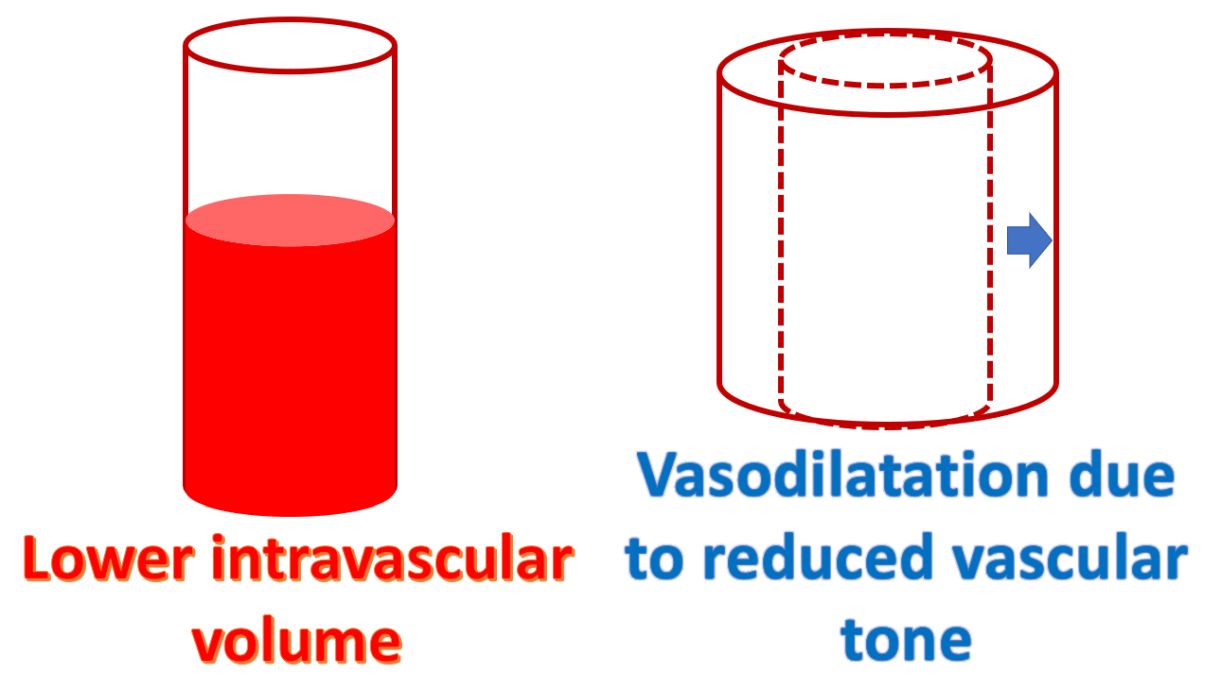How do diuretics lower blood pressure?
How do diuretics lower blood pressure?
Abstract: Diuretics lower blood pressure by lowering the intravascular volume and sodium content. Lower sodium content may also reduce the vascular tone.

Diuretics lower blood pressure by lowering the intravascular volume and sodium content.1 It is mentioned that thiazide diuretics reduce the extracellular volume by about two litres and plasma volume by three hundred milliliters by about two days of usage. But some of these effects on volume contraction get compensated on long term usage due to compensatory mechanisms. Moreover, if volume loss was the main reason for lowering blood pressure with diuretics, loop diuretics which produce more of volume loss should have been more powerful anti hypertensives than thiazide diuretics. But the fact is the reverse, except in situations of volume overload where loop diuretics have a better effect on lowering blood pressure.
Lower sodium content may also reduce the vascular tone. It has been shown that total peripheral resistance falls with long term diuretic treatment.2 This lowering of total peripheral resistance occurs only on long term usage and in the acute state, thiazide diuretics increase the total peripheral resistance by reflex sympathetic activity in response to volume depletion.3
It is interesting to note that while diuretics lower an elevated blood pressure, they seldom reduce blood pressure in normotensives.4 Another notable factor is that the antihypertensive effect of thiazide diuretics is persistent while their plasma half life is relatively short.5
A direct vasodilator effect of thiazides have also been shown in small experimental studies.6 In experimental preparations, methyclothiazide inhibits the contractile response to norepinephrine. This effect was lost when the endothelium was removed, suggesting a role for the endothelium derived relaxing factor nitric oxide in this response.7
Spironolactone, an aldosterone antagonist is useful in countering the hypokalemia often associated with diuretics.8 It has an additional effect on hypertension due to aldosterone excess situations like primary hyperaldosteronism.
References
- Freis ED. How diuretics lower blood pressure. Am Heart J. 1983 Jul;106(1 Pt 2):185-7.
- Shah S, Khatri I, Freis ED. Mechanism of antihypertensive effect of thiazide diuretics. Am Heart J. 1978 May;95(5):611-8.
- Lake CR, Ziegler MG, Coleman MD, Kopin IJ. Hydrochlorothiazide-induced sympathetic hyperactivity in hypertensive patients. Clin Pharmacol Ther 1979;26:428-32.
- Freis ED, Wanko A, Wilson IM, Parrish AE. Chlorothiazide in hypertensive and normotensive patients. Ann N Y Acad Sci. 1958 Feb 3;71(4):450-5.
- Tarazi RC, Dustan HP, Frohlich ED. Long-term thiazide therapy in essential hypertension. Evidence for persistent alteration in plasma volume and renin activity. Circulation. 1970;41:709-17.
- Colas B, Slama M, Masson H et al. Direct vascular actions of methyclothiazide and indapamide in aorta of spontaneously hypertensive rats. Fundam Clin Pharmacol 2000;14:363-8.
- Colas B, Slama M, Collin T, Safar M, Andrejak M. Mechanisms of methyclothiazide-induced inhibition of contractile responses in rat aorta. Eur J Pharmacol. 2000 Nov 10;408(1):63-7.
- Saklayen MG. Which diuretic should be used for the treatment of hypertension? Am Fam Physician. 2008 Aug 15;78(4):444, 446.



